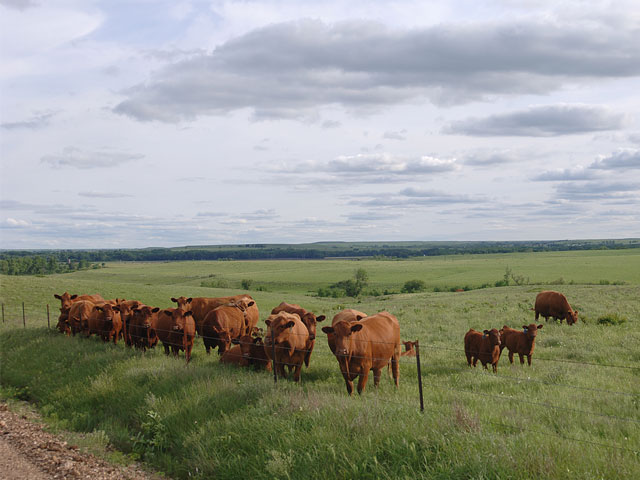Global Beef Outlook
US Leads the Way on Production Efficiency
The months ahead look positive for the beef industry, especially at the cow-calf level, according to a global outlook report from Rabo AgriFinance senior protein analyst Don Close.
Close, well-known market pundit within the beef business, provided his thoughts on the U.S. economy, and global beef markets this year and into 2021, at a webinar sponsored by the American Feed Industry Association. He said he expects to see cow liquidation in the U.S. continue into 2021, a number tied closely to how much drought expands. He estimates U.S. beef production for the year up 1% to 1.5%, due to both cow liquidation and a backlog of feeder calves, that he puts at around a million, outside of feed-yards.
"The lion's share of that million head outside of feed-yards is still trying to work through," he said. "Because of that I think we will still see very large placements through the first quarter of 2021, and into the second quarter."
He added average carcass weights are up 26 pounds, compared to a year ago, and that many analysts think the rally in corn prices will quickly normalize carcass weights. Close, however, doesn't believe the result will be quite so stark or fast.
"Given the foundation we have in genetics, plus a 2-billion-bushel carryover of corn, we are not in a situation where availability of feed is going to be a problem. It's our expectation on beef production through 2021, that we'll see a 1.5% increase the first part of the year, a lot of that increase and the impact from it having been worked through by the time we get to the second half of 2021.
P[L1] D[0x0] M[300x250] OOP[F] ADUNIT[] T[]
"By then, we think tighter supplies from increased cow slaughter in both 2019 and 2020 will reduce availability of cattle on feed. We'll likely then see a stronger market in the second half of 2021."
A key area for the beef industry will continue to be export markets, where Close noted the National Cattlemen's Beef Association (NCBA) at its summer meeting set a very aggressive goal of reaching 17% on exports. This year and next he expects beef exports at the 11% to 12% range.
"Long term we are on a growth curve. With quality of product, trade agreements and whatever becomes of the U.S.-China Phase One Agreement, we are in a good spot for continued export growth."
Close noted that as sustainability continues to be emphasized, the U.S. is in the enviable position of representing 20% of global beef production, with just 8% to 10% of global cattle numbers. He said the U.S. is "hands down the most efficient beef producer in the world right now".
BEEF NEWS FROM OUTSIDE THE U.S.
Reporting on several key countries with regards to beef production, Close noted the following:
CANADA. The cow herd continues to contract, but total number of cattle on feed are steady to higher. Western feed-yards in Alberta have reopened. There is increased dependence on U.S. feeders to keep pens full. The weakness of the U.S. dollar has made the purchase of our feeders even more attractive.
MEXICO. Incredibly hard-hit from COVID-19, the country is in the middle of a tough economic downturn with trade volumes off substantially. Shipments of feeder cattle year-to-date are up, and percentage of heifers in that export number is thought to be above historical norms, which may indicate some serious herd liquidation.
BRAZIL. Beef consumption and production are off as much as 10% for the year here. Exports have kept their market afloat; they are a huge supplier to China. The country devalued its currency to keep an aggressive pace with exports, but how much they can depreciate their currency before it becomes too damaging to the economy to continue is unclear.
AUSTRALIA. Cattle slaughter year-to-date is off about 31%. The rains have finally started here, and producers are in a mirror-image of the U.S. market back in 2014. Massive declines in steer numbers going to market; even bigger reductions in females. Currently it's not unusual to hear of cow-calf pairs bringing $4,000 in their current market.
NEW ZEALAND. This country has gone all-out on the sustainability front, and they are trying to build a brand off of the pristine waters, clear blue skies, year round green grass image. Producers who don't meet sustainability regulations are seeing high taxation levels.
CHINA. Reports of huge expansion and swift recovery from African Swine Fever (ASF) are likely overestimated, perhaps by as much as 80%. They are determined to be self-determinative in pork and poultry, not beef. With the growth of their overall economy, and their adaptation of Western-type diets, this is a bright spot for global beef trade in the future.
(c) Copyright 2020 DTN, LLC. All rights reserved.





